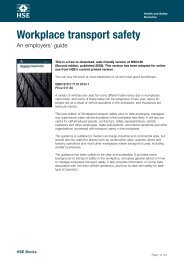Download - Arri
Download - Arri
Download - Arri
You also want an ePaper? Increase the reach of your titles
YUMPU automatically turns print PDFs into web optimized ePapers that Google loves.
2 8 C a m e r a<br />
The Sydney Dance Company promo<br />
B E TRANSFO RM ED was the first<br />
TV commercial shot with the<br />
ARRIFLEX D-21 in Australia and<br />
also the first time using the innovative<br />
Mscope mode of the camera.<br />
Sydney Dance Company<br />
When creative agency Area 51 was commissioned<br />
to produce a promotional television<br />
commercial for the Sydney Dance<br />
Company (SDC) as part of FOXTEL’s principal<br />
sponsorship of the SDC, their brief from the<br />
artistic director Rafael Bonachela was to<br />
create ‘visual art’. Photoplay Films Director<br />
Husein Alicajic workshopped a number of<br />
ideas and finally settled on the premise of<br />
transformation. In the spot, a lone dancer<br />
slowly evolves into many, and the dancers’<br />
costumes progress from bare flesh to urban<br />
black attire. According to Alicajic, “I wanted<br />
to convey an arc that investigated the idea<br />
of foetal-like progression.”<br />
The dancers’ organic human form was set<br />
against the stark and geometric minimalism<br />
of the Deutsche Bank building in Sydney’s<br />
CBD. As a corporate sponsor of the SDC,<br />
Deutsche Bank allowed the production to film<br />
on several floors of their modern high rise<br />
facility – a privilege never before afforded to<br />
other filmmakers. Alicajic adds, “I think that<br />
the setting of this piece was very important<br />
to the message that was to be conveyed. The<br />
juxtaposition of the soft human form against<br />
the clinical modernity of the architecture was<br />
something that I wanted to explore. In a way,<br />
the dancers’ journey takes them from the top<br />
of the structure and delivers them down to<br />
the earth where they become more adult<br />
and complete.”<br />
As soon as cinematographer Tony Luu ACS<br />
was brought on board, he knew that this<br />
vision could only be captured in widescreen<br />
ratio. “I was presented with a lot of photographs<br />
of the building’s spaces, which<br />
contained minimalist greys and glass, punctuated<br />
with an exposed steel spine that runs<br />
all the way down the centre of the building,”<br />
says Luu. “There were very graphic lines<br />
throughout the structure, so the camera<br />
needed to present that in a very formal,<br />
designed way. I’d worked a lot with anamorphic<br />
lenses, and I love the softness and<br />
texture that they illustrate. Also the shallow<br />
depth of field is incredible. So when I offered<br />
the idea of shooting anamorphic to Husein<br />
he leapt at the opportunity to try it.”<br />
Luu was left with a number of camera options<br />
to shoot the spot with: 35mm film, Red one,<br />
or the newly arrived ARRIFLEX D-21. “I had<br />
just completed shooting with the D-21 on a<br />
short film called CREATING FORTUNE, where I<br />
was completely blown away by the filmic<br />
quality of this new digital camera. It just<br />
doesn’t look like any other digital motion<br />
picture camera that I’ve worked with. Red<br />
anamorphic doesn’t give you the whole<br />
width of the lens, and the producers felt that<br />
film was a little out of reach. So it was an<br />
easy decision.”<br />
The camera was supplied by Cinoptix, who<br />
had only recently taken delivery of the<br />
camera from ARRI Australia. The D-21 uses a<br />
3K S35mm sensor allowing for recording in<br />
a number of formats to a number of devices.<br />
Takao Hasuike from Cinoptix comments, “The<br />
D-21 can record in 3K ARRIRAW to a solid<br />
state or hard drive recorder like the Keisoku<br />
Giken and S.Two, or in HD in either 4:4:4 or<br />
4:2:2. In the case of this project, it records<br />
in HD to Sony SRW-1 HDCAM SR tape<br />
recorder in 4:2:2 dual stream using the<br />
Mscope anamorphic mode.”<br />
Because the camera has a full-height sensor,<br />
rather than a 16:9 chip, it allows for the use<br />
of anamorphic lenses in the same way as<br />
with 35mm film. The camera also has a<br />
feature that allows filmmakers to squeeze<br />
this anamorphic image into a HD dual<br />
stream, for recording to the Sony SRW-1<br />
deck. ARRI calls this process ‘Mscope’. Tony<br />
comments, “Mscope is an ingenious way to<br />
shoot anamorphic on video tape, because<br />
it allows you to retain as much resolution as<br />
possible through a natively 16:9 recording<br />
format. It splits the 1920x1440 image into<br />
DoP Tony Luu ACS shooting a dramatic<br />
wide angle shot from the crane.
















